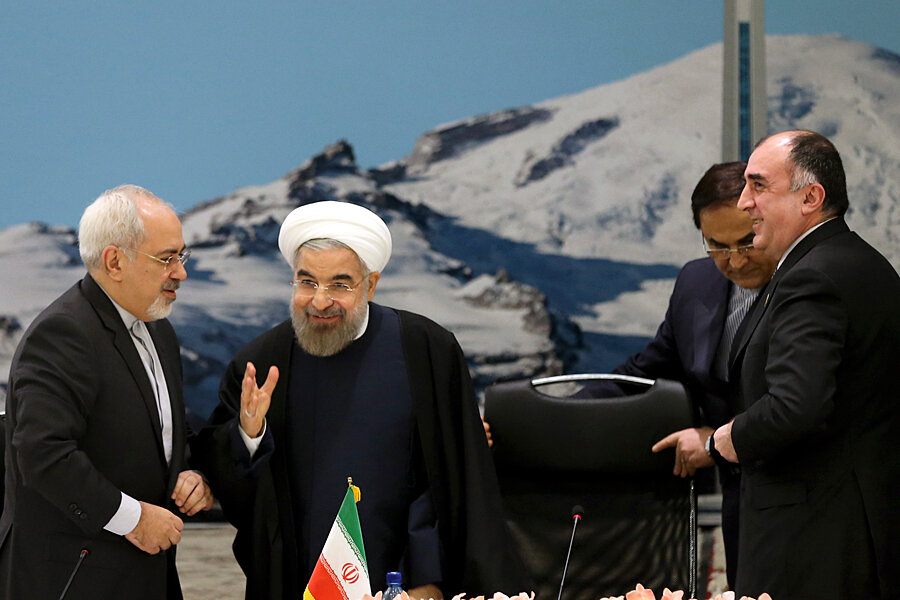Tweets put a twist on diplomacy at Iran nuclear talks
Loading...
| Istanbul
Exhausted, you’ve just finished a marathon round of nuclear negotiations that failed.
Everyone sitting around the negotiating table knows why: French Foreign Minister Laurent Fabius brought a host of last-minute concerns to the deal that had already been painstakingly negotiated between the US and Iran, which had been thought ready for signing.
The result was 20 changes to the text of the document, which were finally accepted after many hours of back-and-forth by all members of the P5+1 group (the US, Russia, China, Britain, France and Germany).
You, as Iran’s Foreign Minister Mohammad Javad Zarif, are presented the revised document late, as talks are drawing to a close. But the changes mean that you must consult with Tehran, forcing another round of talks: Geneva III.
Later you are surprised to hear US Secretary of State John Kerry blame Iran for the breakdown, for not being able to accept the deal “at that particular moment,” despite “unity” by the P5+1 over their “fair proposal.”
How do you respond? In the old days – and if Iran and the US had not severed diplomatic ties 34 years ago – you might have issued a demarche to Washington, demanding a more accurate accounting.
But instead you turn to Twitter, as a member of Iran’s new presidential administration who has become adept as communicating directly with the outside world through Twitter and Facebook.
“Mr. Secretary, was it Iran that gutted over half of US draft Thursday night? and publicly commented against it Friday morning?” you tweet, referring to the French role as spoiler. Within minutes, your tweet has been picked up by the wire agencies, and Iran's complaint is "official."
You state in another tweet that Iran is “committed to constructive engagement,” and in another that “no amount of spinning can change what happened…but it can further erode confidence.”
Like other senior officials – including Iran’s Supreme Leader Ayatollah Ali Khamenei – you are active on social media.
Just the day before the Geneva III talks, you post a video on YouTube, to present Iran’s argument for a nuclear program in English, calling for “dignity” and a “leap” toward modern progress for your nation a reasoned tone.
But Twitter and Facebook are filtered and therefore illegal in Iran, and their extensive use by Iran’s new crop of tech-savvy officials has raised questions inside Iran about the obvious contradiction.
Just last week in a speech, Mr. Khamenei referred to the disputed election of 2009, and the mass street protests that were partly organized using social media. He said America had then “hoped to overthrow the Islamic Republic with the help of media activities and networks such as Facebook [and] Twitter….They had these foolish delusions.”
Iran’s centrist President Hassan Rouhani, who today marks 100 days since his first cabinet meeting, has promised to ease censorship and filtering, and tweets in both Persian and English.
So how did you, as Mr. Zarif, announce two days ago that a nuclear deal had finally been clinched after another marathon round of talks, Geneva III? With a tweet.
And your deputy Seyed Abbas Araghchi? He also tweeted the news that would launch euphoria across Iran: “Day Five. 3am. Talks. White smoke.”








